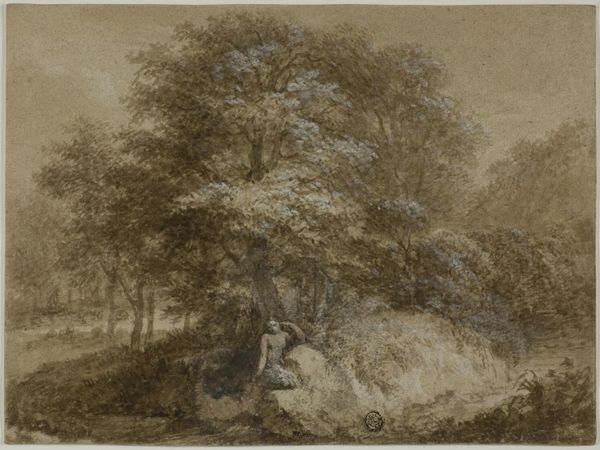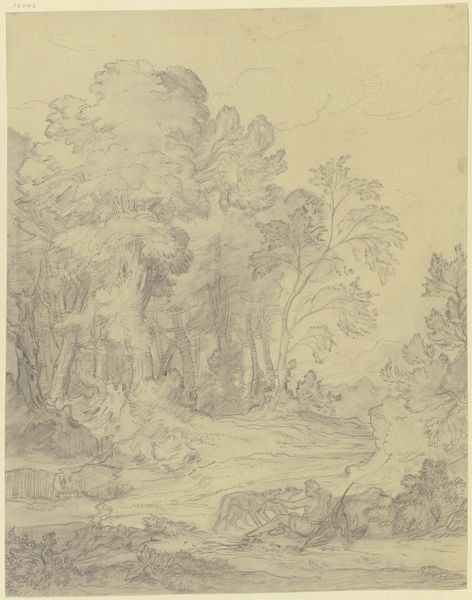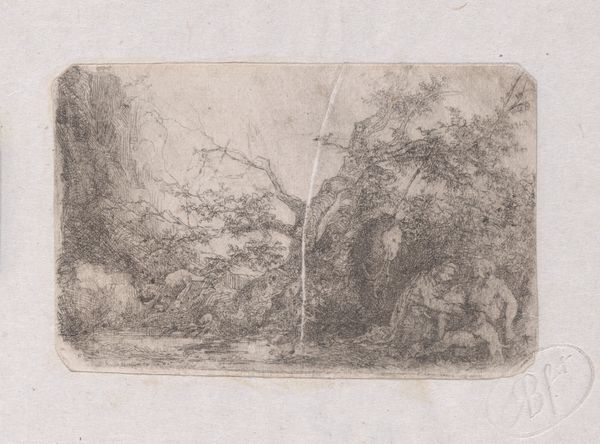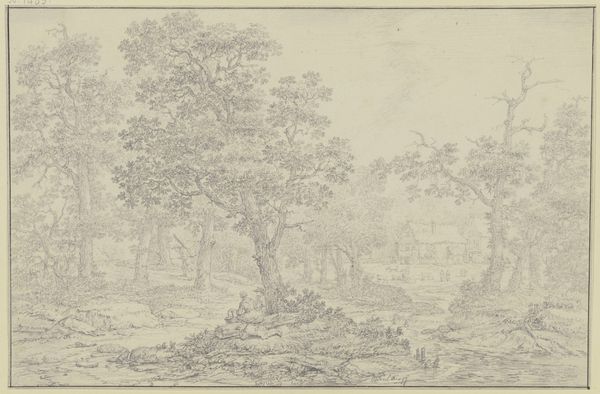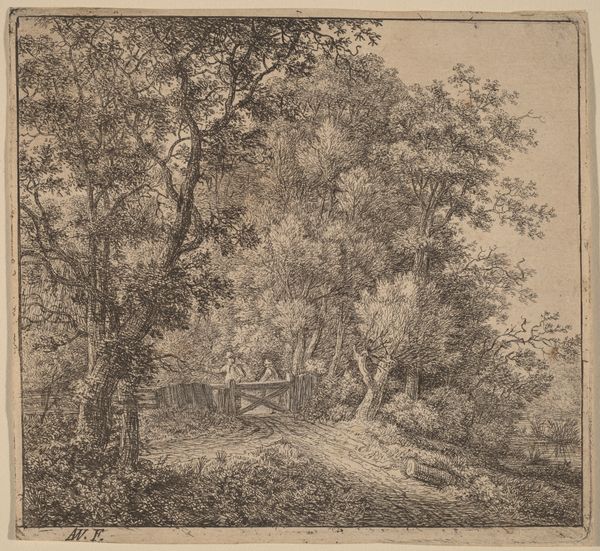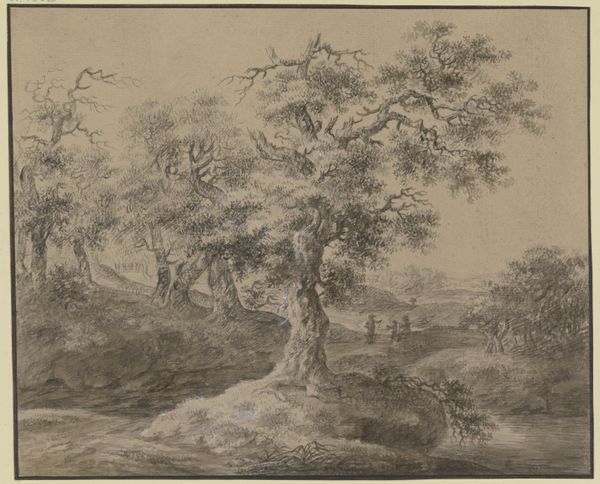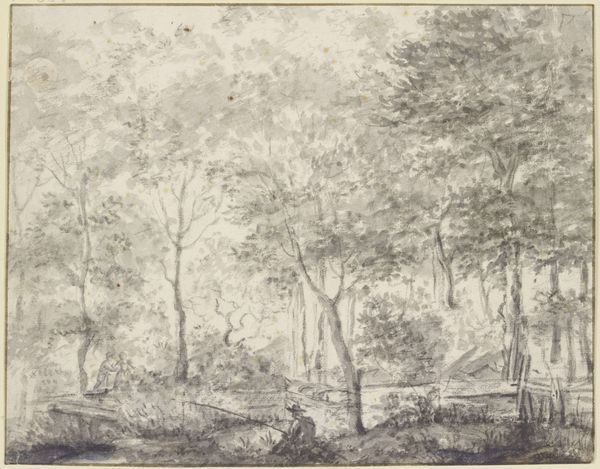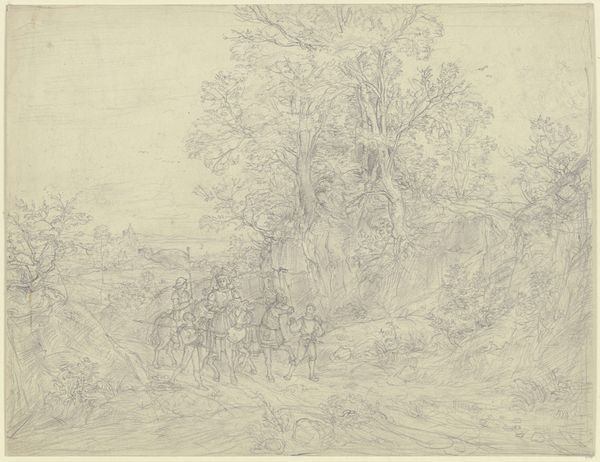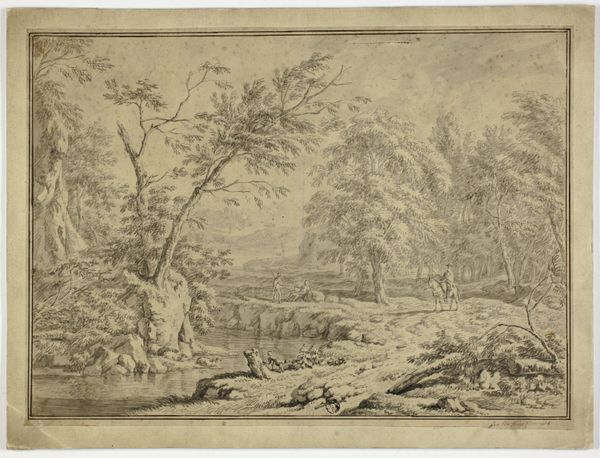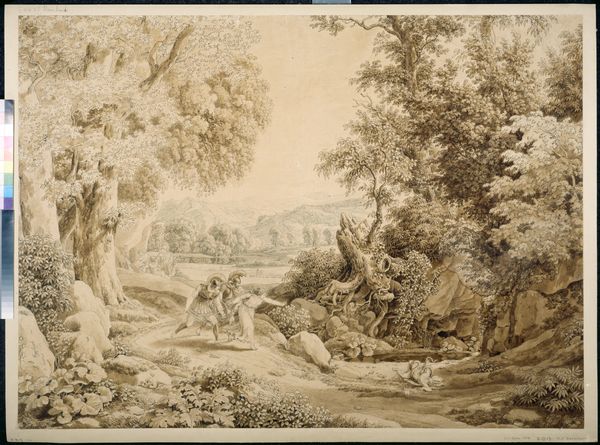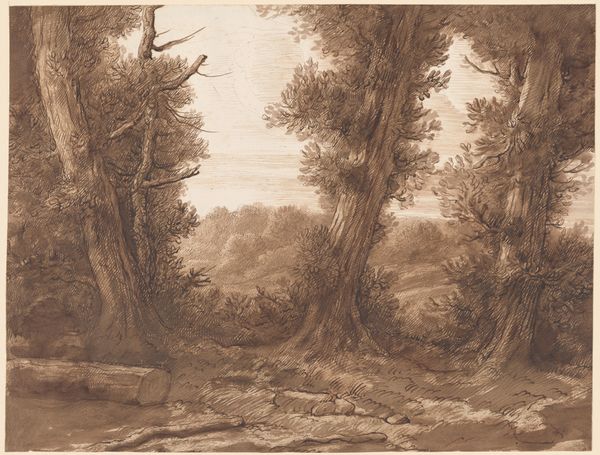
drawing, paper, pencil
#
drawing
#
16_19th-century
#
pencil sketch
#
landscape
#
etching
#
figuration
#
paper
#
romanticism
#
pencil
Copyright: Public Domain
Editor: We’re looking at "Bathing Girls at the Edge of the Forest" by Carl Begas the Elder, created in 1841. It’s a pencil drawing on paper. The scene feels so delicate and dreamlike, almost as if it exists more in memory than in reality. What stands out to you? Curator: Note how Begas meticulously structures the composition through the strategic placement of figures. The carefully modulated pencil strokes build up a sense of depth, pushing back the dense foliage to create a balanced, almost classical, arrangement. This interplay of light and shadow isn't merely representational; it becomes a formal element in itself. Editor: It's true, the way the figures are arranged really structures the piece. Does the Romantic style affect the visual reading? Curator: Undeniably. Romanticism prized emotion and the sublime. Yet here, feeling is mediated by a dedication to structured composition and draftsmanship. Look at the individual figures, carefully modeled, each contributing to the whole. How do you feel the scale impacts your experience? Editor: Because it's a drawing, it invites you in. The delicacy forces you to get up close and scrutinize it. I can see how much attention he gave to the details. Curator: Precisely. And from a formalist standpoint, this insistence on line and form creates its own sort of emotional experience. It isn’t just subject matter. It is about seeing how he translated the visible world into a calculated arrangement. Editor: So, by examining the formal elements, we can discover the artistic choices and perhaps a more accurate representation of the artwork? Curator: Indeed. Sometimes what is depicted on the surface belies deeper, more rigorously designed architectures. Approaching a work through close observation allows us access to these structures. Editor: That's fascinating. I'll definitely look at art with a more analytical eye from now on.
Comments
No comments
Be the first to comment and join the conversation on the ultimate creative platform.
